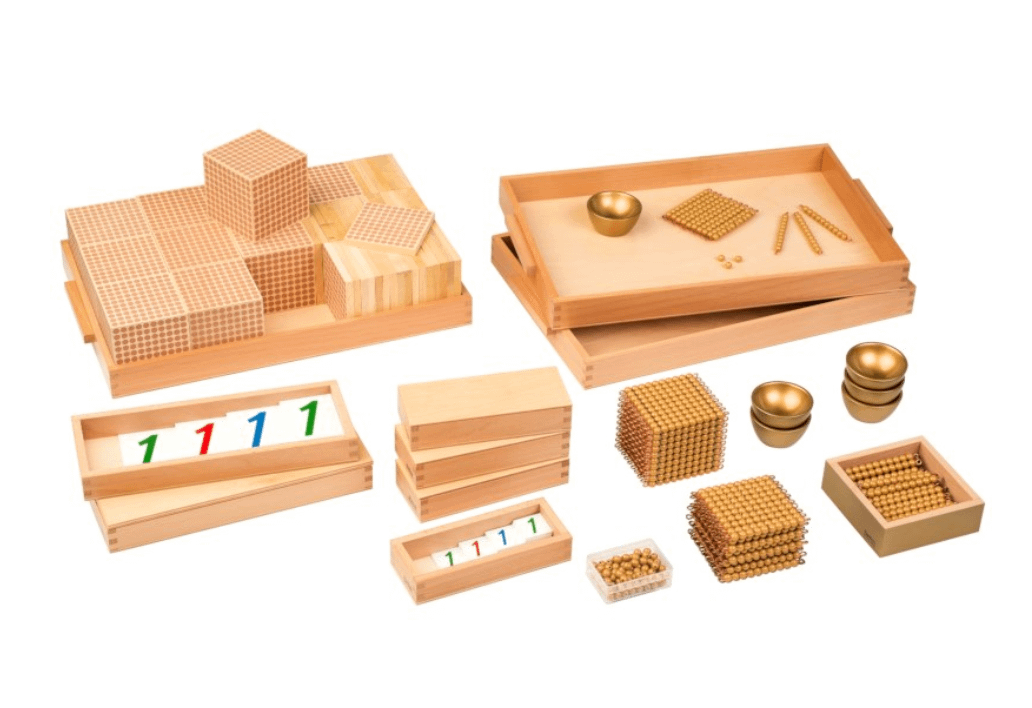Montessori Education | What Is a Montessori Toy
Thanks to social media popularizing the “natural” aesthetic, Montessori toys are all over the place these days. I should say “Montessori” toys in air quotes because many of these toys are not actually Montessori at all. Unfortunately (or fortunately?) the term Montessori is not copyrighted so anyone can use it to describe their toys, schools, and more.
The real Montessori toys are actually the didactic materials designed by Maria Montessori herself, which you will see in Montessori classrooms (particularly those certified by the Association Montessori Internationale or AMI, an organization she started). The pink tower, golden beads, and sandpaper letters are some of the popular materials you may know about. Nienhuis Montessori produces the gold standard in Montessori materials and all are AMI approved.
These materials are meant for the Montessori classroom, and unless you are homeschooling you will most likely not have most of them in your home. In fact, Montessori guides (the Montessori term for teacher) often discourage children from having these Montessori classroom materials at home since they are working with them at school so often.
So what about Montessori toys at home?
There are a few characteristics that make a toy Montessori friendly:
- It is made of natural materials. If it is made of plastic, it’s most likely not Montessori friendly. There are some exceptions such as Lego or a plastic broom. However, natural materials are still preferred because they appeal to the child’s sensorial experience. The texture, temperature, and weight of wood, metal, and glass help your child understand their world. If it has batteries, it is not Montessori friendly.
- It has a natural consequence. A good example is the object permanence box. The ball goes in, disappearing for a second before rolling out and reappearing to the child. This is incredibly simple but the child is able to understand the natural consequence of the ball dropping through the hole and therefore has had their first lesson in gravity. A toy phone with buttons that plays music is a nice contrast to this. The child can understand that when they push the button, music plays. But they have no understanding of the inner mechanism that makes this happen.
- It isolates one (or few) skills at a time. Montessori toys are meant to help your child develop concentration and independence so the toys generally have one single skill they focus on. This coin box, for example, helps the child work on posting small coins into the box (one skill) and then opening the drawer to retrieve them (two skills) and lastly putting the drawer back in (three skills). This is actually quite complex for a baby or young toddler! An activity cube with lots of different buttons and small activities attached to it can be overwhelming for a baby and disrupt their concentration when they go from one portion to another. Montessori toys try to eliminate that.
- It is based in reality. As much as possible, Montessori toys should be real objects or reality-based. For example, toy animals that look like the real animal but miniature vs a cartoon version or a real broom and dustpan that is child-sized. Reality-based also means avoiding toys with cartoon characters or fantasy (at least for ages 0-6 when children can’t determine between reality and fantasy).
DIY Toys
Open Ended Toys
Montessori friendly toys don’t have to be expensive. There are many ways to DIY an activity for your child based on what you observe they are interested in. For example, your kids could be posting cylindrical shapes into small spaces; or you could set up wooden play people and old spice jars to post into a pen organizer. All of these items are things you already have. Possibilities are endless - just use your IMAGINATION.
At home is also a great place to integrate open-ended play which you may not see as much in a Montessori classroom. Toys such as train sets, blocks, baby dolls, varied art materials, and play scarves all encourage children to use and develop their imagination.- If you are looking for Montessori friendly toy recommendations, Nicole Kavanaugh from The Kavanaugh Report has done tons of guides. Check her out Montessori Product Guides – The Kavanaugh Report.
